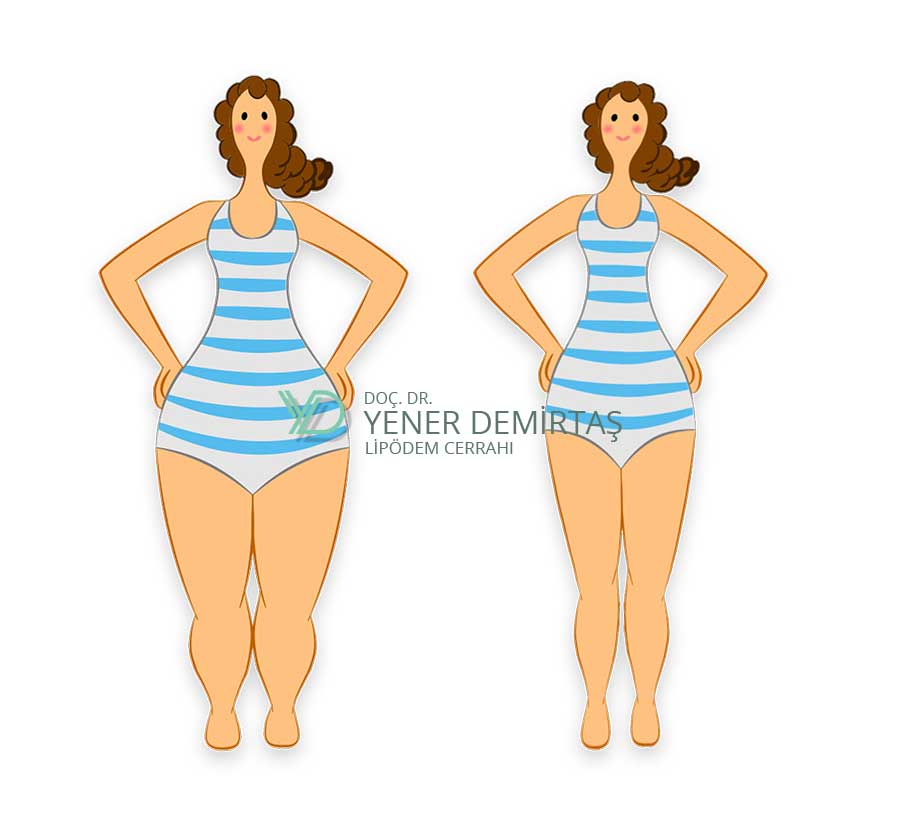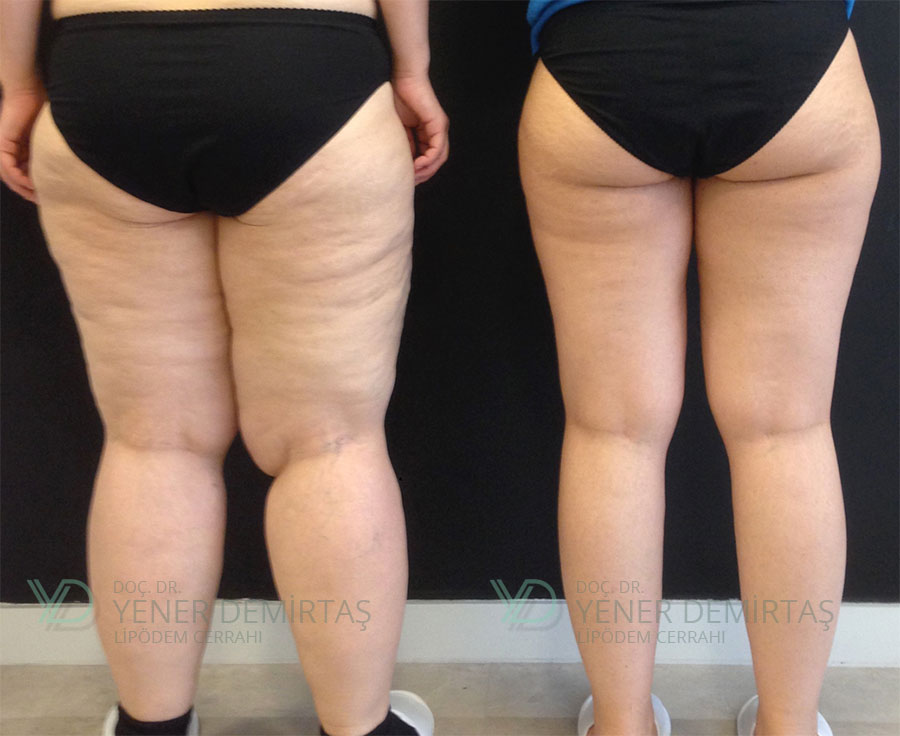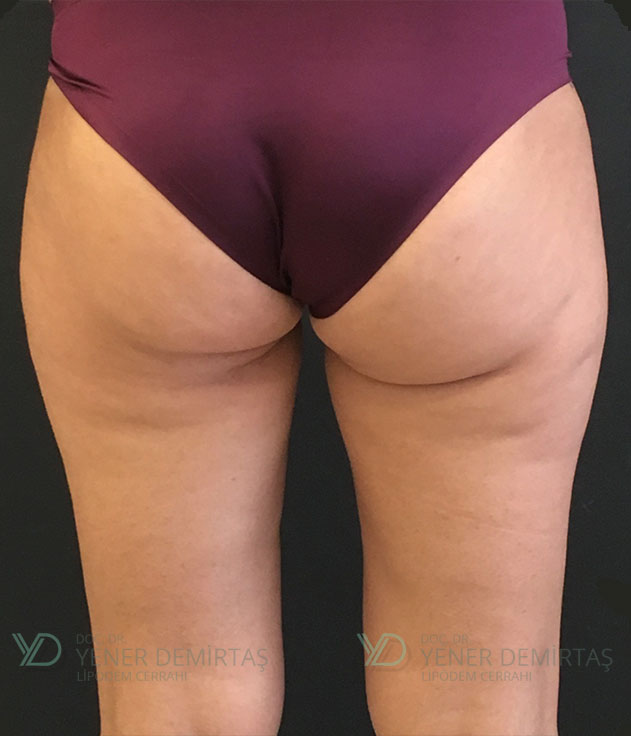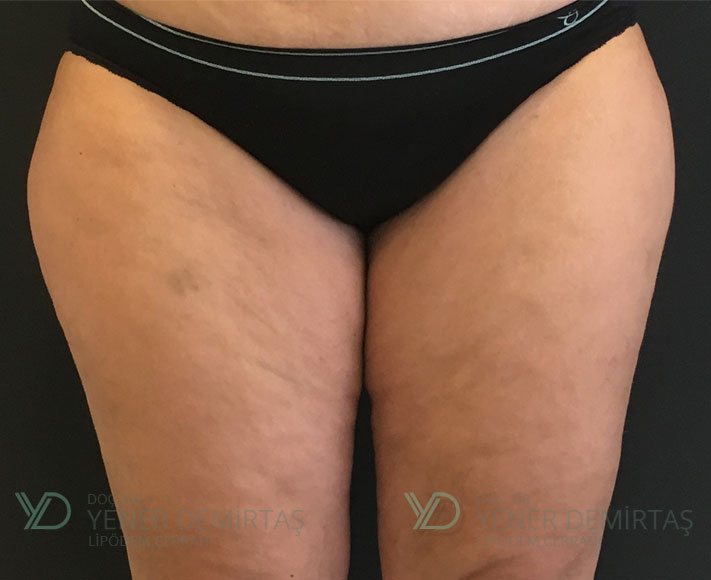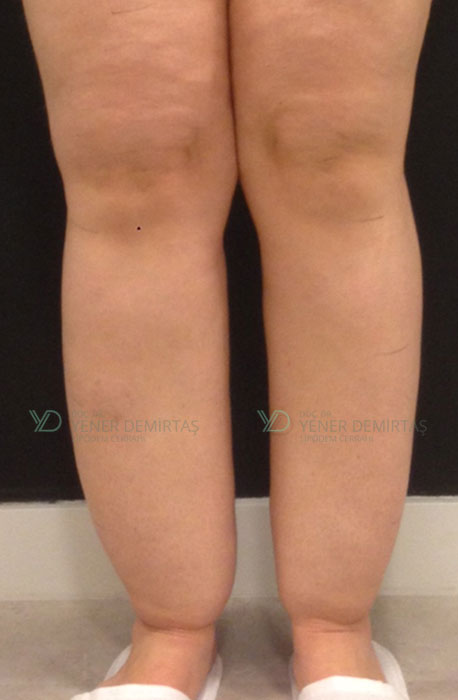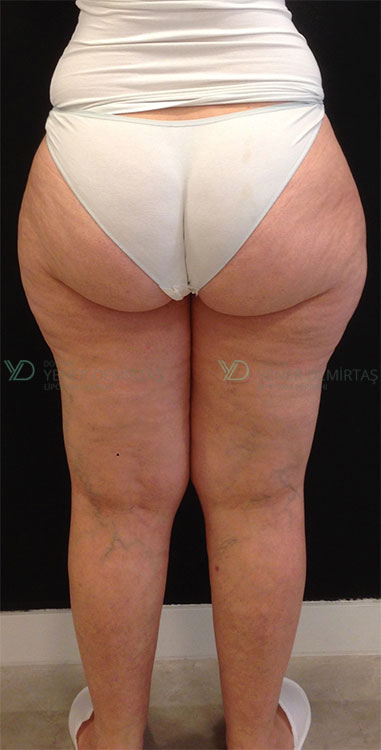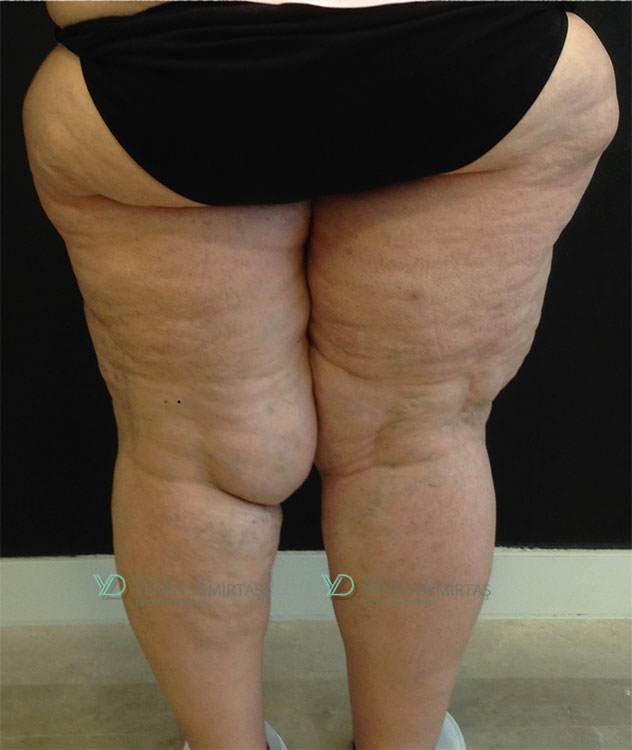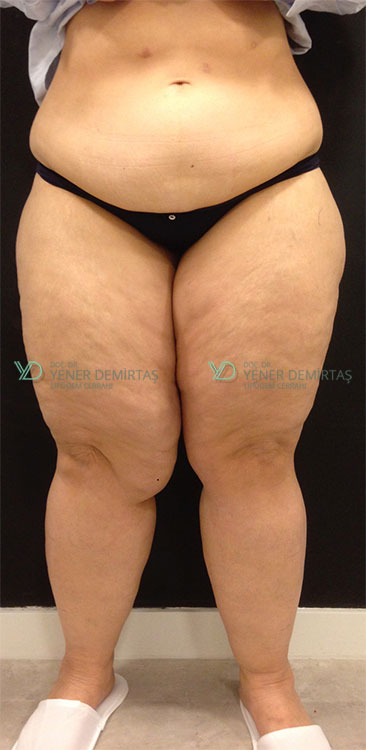- Lower half of the body, including hips, thigh and leg are thicker compared to upper half.
- There are different types of lipedema according to the regions effected more.
- It is very easy to gain weight at these parts.
- The fat accumulated is highly resistant to diet or exercise.
- Maximum 10-15% of this fat can be lost with vigorous efforts.
LIPEDEMA
1. Disproportional accumulation of fat is a must.
2. Family history + in 95%.
Mother (Stage 2) and Daughter (Stage 1)
- It is inherited via family genes, but it may skip generations.
- The disease is present in women of the father’s or mother’s relatives, at least a few of them.
- If left untreated, it is progressive.
3. Asymmetries observed in 95%
- An asymmetry between left and right is a high probability in lipedema patients. Typically obvious at gluteal lines.
- Some of the patients notice this condition during wearing pants but more commonly they are unaware.
- A cross-asymmetry is not rare: the thigh is thicker on the left side and the leg is thicker on the right side, or vice versa.
4. Easy bruising (%95)
- Affected regions are easily bruised. Sometimes the patient does not even remember the causative contact.
- These bruises, expected to heal in a week in normal population, may persist for a couple of weeks or longer.
5. Definitely unique to women
- The signs of lipedema usually show up at puberty.
- Exacerbation during pregnancy and menopause.
6. Tenderness in 80%
- Patients describe a kind of discomfort with touching at effected body parts.
- Rarely, the feeling may be very severe.
7. Fat deposition at upper arm (70%)
- The area between axilla and elbow is effected.
- This area is difficult to treat with liposuction only in advanced cases, due to loose structure of the covering skin. An arm-lifting may be required.
8. Cold feet and (hands) in 65%
- Commonly, patients tell that they cannot heat their feet, even in summer.
9. Loose joints in 60%
- Joints are hyper-mobile, especially elbow and knees.
- Gestures are easy to perform for lipedema patients during activities like pilates or yoga.
- Look at the female acrobats at the circuses; many have lipedema.
10. Swelling at the ankles (60%)
- The ankle bones may be undefined.
- A crease at the junction of leg and foot may emerge at the evening of a tiresome day.
11. Thin, varicose veins (55%)
- Spider veins are quite common.
- They are usually located at the back of legs.
- These are different from deep venous problems and are not harmful, though bothersome in appearance.
12. Pain (50%)
- Pain is the leading complaint in older patients and at later stages.
- This pain is sometimes so severe that patients cannot sleep at night.
13. Goiter (50%)
- I have realized that half of the lipedema patients have a history of thyroid gland problems somehow.
- It is generally hypo-thyroidism, but Hashimoto thyroiditis is also seen.
14. Obesity co-existence (50%)
- Obesity is also present in half of the patients.
- This is generally the result of giving up the fight, and ceasing exercise and healthy nutrition.
- This is a very common story, because these tools are effective to prevent progression of lipedema but cannot reverse the process.
- Obesity surgeries does not work for lipedema.
Contact Information
Barbaros Mah. Ihlamur Bulvarı
Ağaoğlu My Newwork, No:3, Kat: 3, D:25
34746, Ataşehir - İstanbul - Turkey



